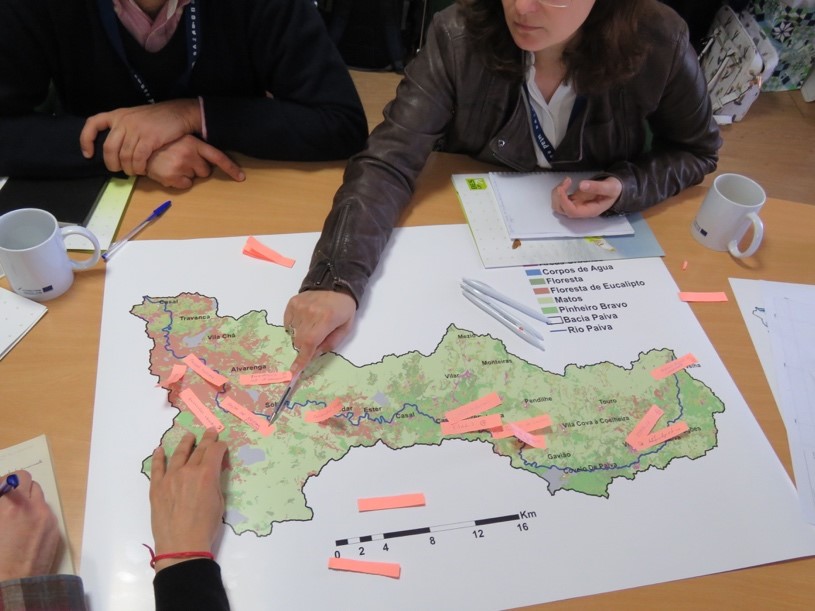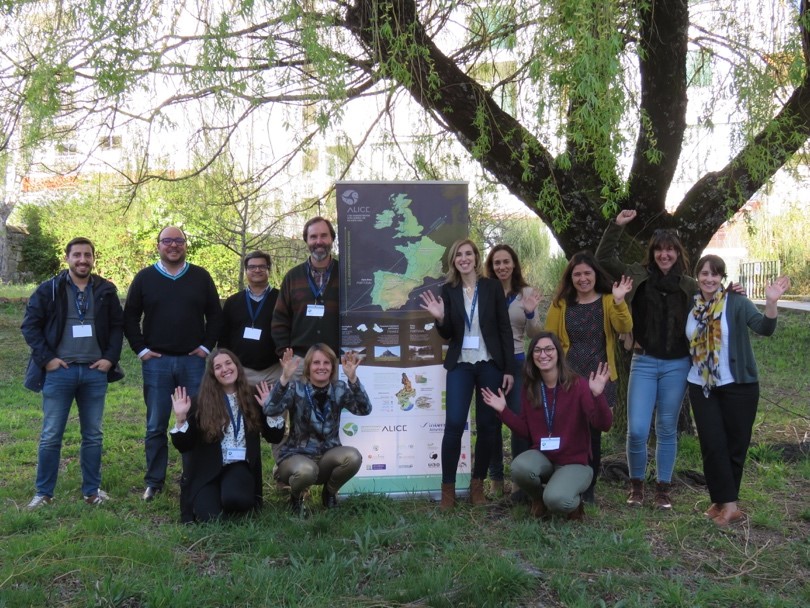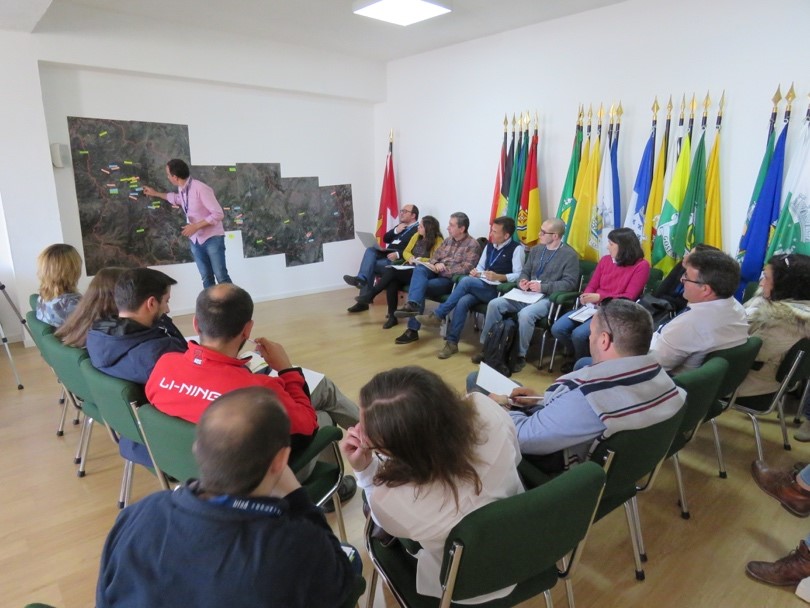
One of ALICE project’s goals is to create a road map for a participatory assessment to promote Blue and Green Infrastructures Networks (BGIN), through co-development and share of tools to local actors.
In the duration of the project, each of the 4 case studies will promote 3 to 4 participatory meetings joining local actors and scientists to share visions on the issues, potential barriers and possible solutions. This process will collect expert knowledge and build a common culture around BGINs and Ecosystem Services (ES) to identify its benefits delivered at the terrestrial, aquatic and land sea interface in the Atlantic Region.
In Portugal, the first participatory meeting took place, on March 22nd, in Castro Daire (at the heart of the Paiva Catchment).
The meeting, attended by 20 people, brought together scientists and academics working on the project, but also and foremost stakeholders related in some way to the land management of Paiva River catchment, working in administration, tourism, forestry and water sports.
The involvement on this process of people working every day on the grounds of the Case Study enables more easily and effectively the identification of the problems and helps creating the solutions, namely through successful stories and/or practices already implemented. Their opinion on how the project can affect the region, what ecosystem services can be provided and on how we can all work in cooperation is crucial for the success of the project.
Firstly, they were asked to identify the river’s main issues, by indicating the various environmental problems detected in the catchment and the numerous pressures exerted on the territory. In addition, the stakeholders were asked to rank these problems, declaring which ones they considered a priority to solve or mitigate. This exercise was developed through brainstorm among 4 small groups of stakeholders using Paiva’s catchment map as a tool to identify more accurately, problematic areas.
They indicated the cultural, regulation and production services provided by Paiva’s catchment, and identify several spots along the catchment with high potential to offer the same services.
Main considerations on CS environmental problems:
- Bad water quality (farming, no sanitation network in small clusters, ETARs – Castro Daire, Vila Nova de Paiva – do not work or work poorly);
- Lack of active forest management closely linked to invasive species, land abandonment and Eucalyptus monoculture;
- Forest fires that lead to more floods;
- Tourism massification and
- Water abduction
Stakeholders noted, at the end, which are, within the territory, the examples of BGINs already implemented with high effectiveness in the resolution of problems, so they could be implemented in other territories with similar issues.
Successful stories identified:
- Elimination of invasive species
- Avoiding lack of land management knowledge through dissemination information on good practices
- Planting of autochthonous forest species in burned areas in Serra da Freita, Ameixieira, and replacing Eucalyptus in Alvarenga
ALICE was designed, from the very beginning, to integrate a social dynamic in the ecological and environmental framework that typically surrounds these issues. The stakeholder’s meetings are meant to be the start of this participatory process.

Stakeholders workshop_Portuguese Case Study at Castro Daire 

Portugal Team at Castro Daire 
Stakeholders workshop_Portuguese Case Study at Castro Daire
